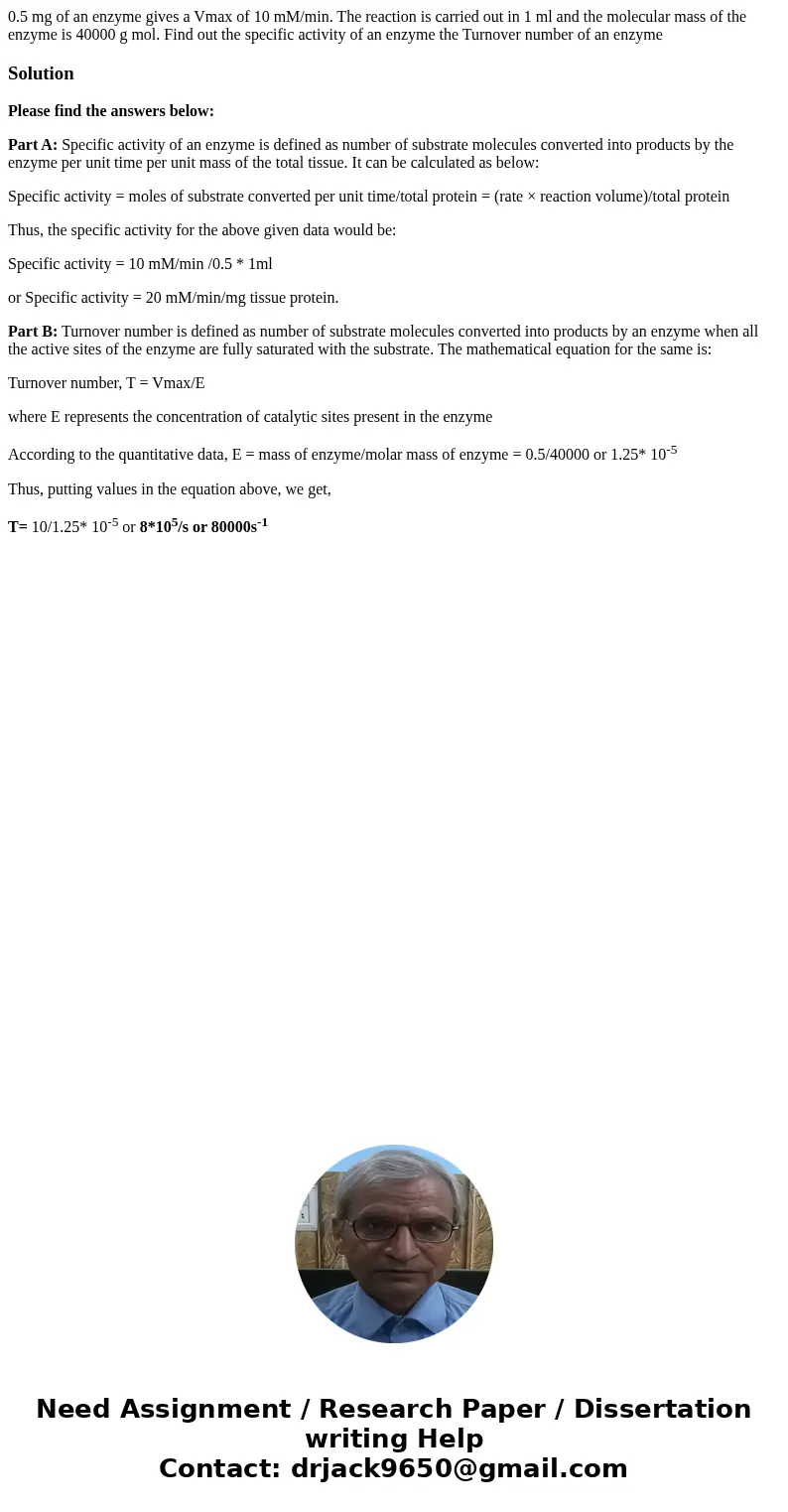05 mg of an enzyme gives a Vmax of 10 mMmin The reaction is
Solution
Please find the answers below:
Part A: Specific activity of an enzyme is defined as number of substrate molecules converted into products by the enzyme per unit time per unit mass of the total tissue. It can be calculated as below:
Specific activity = moles of substrate converted per unit time/total protein = (rate × reaction volume)/total protein
Thus, the specific activity for the above given data would be:
Specific activity = 10 mM/min /0.5 * 1ml
or Specific activity = 20 mM/min/mg tissue protein.
Part B: Turnover number is defined as number of substrate molecules converted into products by an enzyme when all the active sites of the enzyme are fully saturated with the substrate. The mathematical equation for the same is:
Turnover number, T = Vmax/E
where E represents the concentration of catalytic sites present in the enzyme
According to the quantitative data, E = mass of enzyme/molar mass of enzyme = 0.5/40000 or 1.25* 10-5
Thus, putting values in the equation above, we get,
T= 10/1.25* 10-5 or 8*105/s or 80000s-1

 Homework Sourse
Homework Sourse